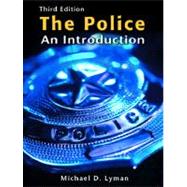
| Understanding the Police | |
| Historical Foundations of Policing | |
| Contemporary Police Systems | |
| Police Operations | |
| Police Authority | |
| Ethics and Deviance | |
| Understanding and Controlling Police Behavior | |
| Personnel Administration | |
| The Police and the Community | |
| Job-Related Issues | |
| Current Challenges and Future Directions | |
| Selected Provisions from the 2001 USA PATRIOT ACT | |
| Sample Police Adademy Curriculm | |
| Model Police Policy Links | |
| Police Web Links | |
| Glossary | |
| Index | |
| Table of Contents provided by Publisher. All Rights Reserved. |
The New copy of this book will include any supplemental materials advertised. Please check the title of the book to determine if it should include any access cards, study guides, lab manuals, CDs, etc.
The Used, Rental and eBook copies of this book are not guaranteed to include any supplemental materials. Typically, only the book itself is included. This is true even if the title states it includes any access cards, study guides, lab manuals, CDs, etc.